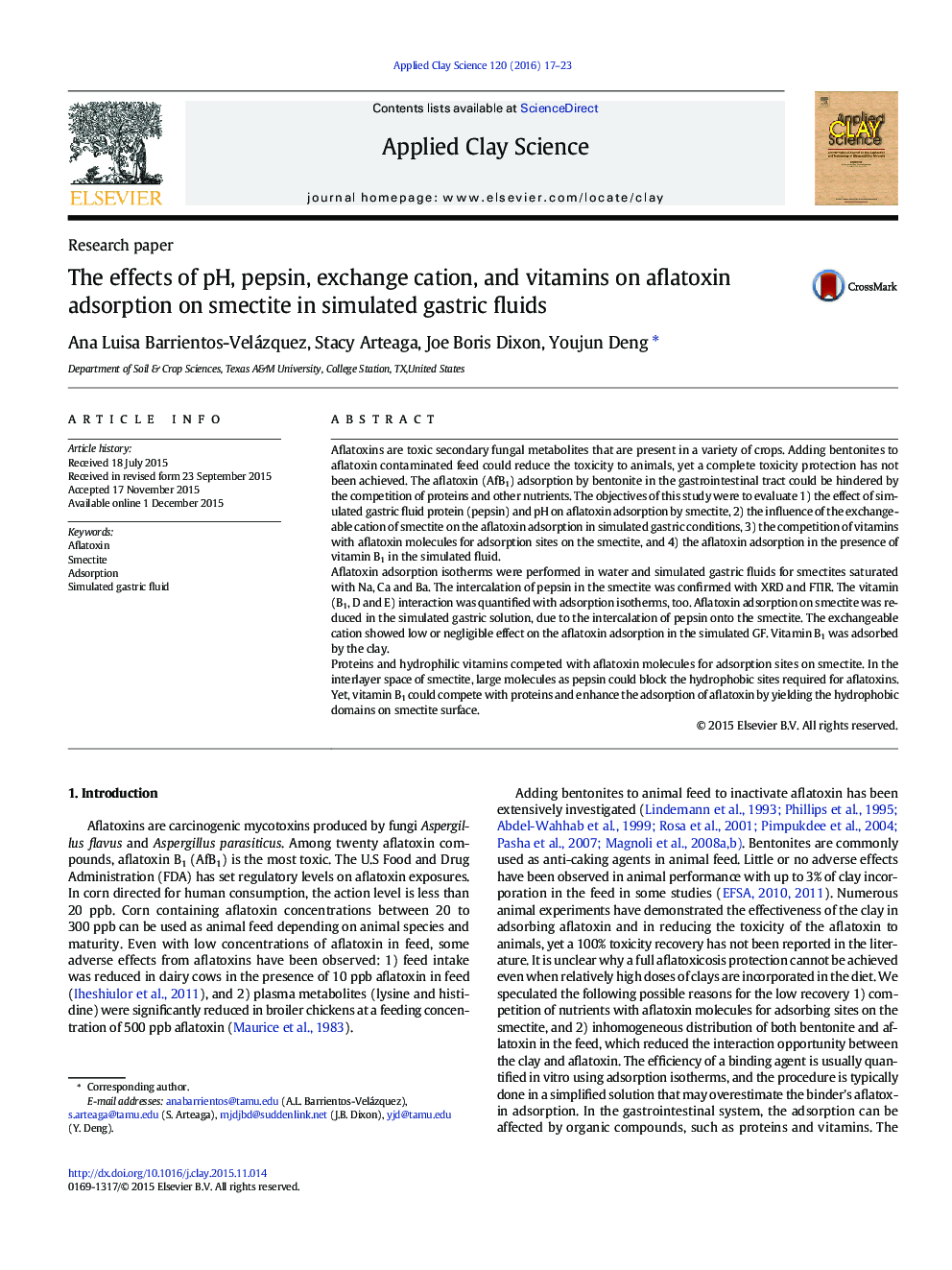| Article ID | Journal | Published Year | Pages | File Type |
|---|---|---|---|---|
| 1694170 | Applied Clay Science | 2016 | 7 Pages |
•Aflatoxin B1 adsorption by smectite was reduced in the simulated gastric fluid.•Adsorption of pepsin by the smectite reduced the available adsorption sites for AfB1.•Vitamin B1 reduced the adsorption of pepsin and increased the aflatoxin adsorption.
Aflatoxins are toxic secondary fungal metabolites that are present in a variety of crops. Adding bentonites to aflatoxin contaminated feed could reduce the toxicity to animals, yet a complete toxicity protection has not been achieved. The aflatoxin (AfB1) adsorption by bentonite in the gastrointestinal tract could be hindered by the competition of proteins and other nutrients. The objectives of this study were to evaluate 1) the effect of simulated gastric fluid protein (pepsin) and pH on aflatoxin adsorption by smectite, 2) the influence of the exchangeable cation of smectite on the aflatoxin adsorption in simulated gastric conditions, 3) the competition of vitamins with aflatoxin molecules for adsorption sites on the smectite, and 4) the aflatoxin adsorption in the presence of vitamin B1 in the simulated fluid.Aflatoxin adsorption isotherms were performed in water and simulated gastric fluids for smectites saturated with Na, Ca and Ba. The intercalation of pepsin in the smectite was confirmed with XRD and FTIR. The vitamin (B1, D and E) interaction was quantified with adsorption isotherms, too. Aflatoxin adsorption on smectite was reduced in the simulated gastric solution, due to the intercalation of pepsin onto the smectite. The exchangeable cation showed low or negligible effect on the aflatoxin adsorption in the simulated GF. Vitamin B1 was adsorbed by the clay.Proteins and hydrophilic vitamins competed with aflatoxin molecules for adsorption sites on smectite. In the interlayer space of smectite, large molecules as pepsin could block the hydrophobic sites required for aflatoxins. Yet, vitamin B1 could compete with proteins and enhance the adsorption of aflatoxin by yielding the hydrophobic domains on smectite surface.
